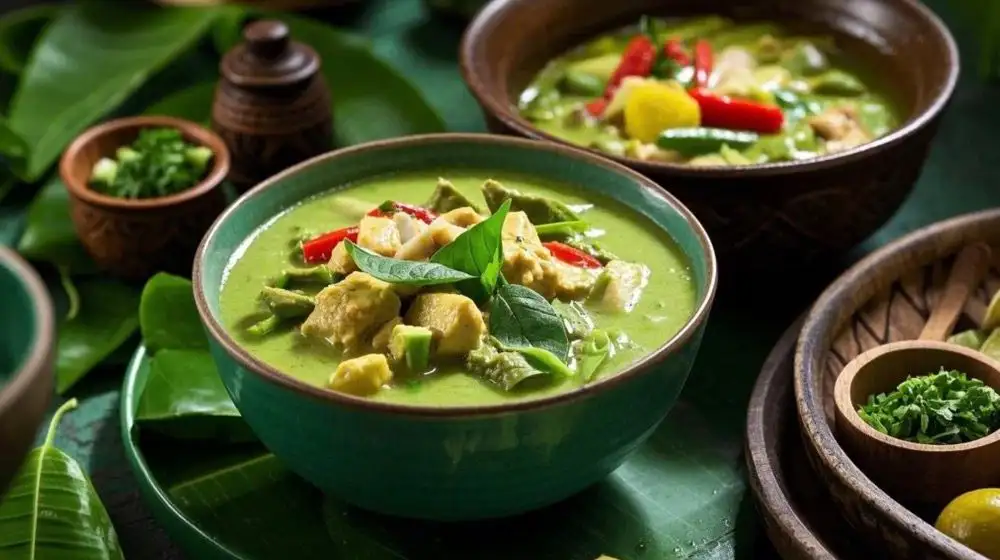How to Balance Flavors for Health-Conscious Cooking
Balancing flavors is the key to creating delicious dishes while maintaining a health-conscious approach. In Southeast Asian cuisine, the harmony of sweet, sour, salty, bitter, and umami flavors is essential. By learning how to balance these tastes, you can create healthier versions of your favorite meals without sacrificing flavor. This guide will help you understand the art of flavor balancing and provide practical tips for making nutritious and satisfying dishes at home.
1. Understanding the Five Core Flavors
In Southeast Asian cooking, the interplay of five core flavors defines the cuisine. Each flavor contributes to the overall taste profile and can be adjusted to suit your dietary goals.
- Sweet: Adds richness and can balance acidity or bitterness. Natural sources include fruits, honey, palm sugar, and coconut milk.
- Sour: Brightens the dish and cuts through richness. Common sources include lime, tamarind, vinegar, and green mango.
- Salty: Enhances other flavors and adds depth. Healthy options include sea salt, fish sauce, and light soy sauce.
- Bitter: Provides contrast and complexity. Bitter melon, herbs (like Thai basil), and certain greens add this element.
- Umami: Creates a savory, mouth-watering taste. Found in fermented products (like miso and fish sauce), mushrooms, and seaweed.

2. Health-Conscious Ingredient Swaps
When cooking for health, choosing wholesome ingredients without losing the balance of flavors is crucial. Here are some healthy alternatives to traditional Southeast Asian ingredients:
- Sweet: Replace refined sugar with natural sweeteners like honey, coconut sugar, or fresh fruit.
- Salty: Use lower-sodium options like reduced-salt soy sauce or homemade fish sauce alternatives.
- Sour: Opt for fresh lime juice or apple cider vinegar instead of processed vinegar.
- Fat: Substitute coconut cream with lighter coconut milk or unsweetened almond milk for creaminess.
- Protein: Use lean proteins like tofu, tempeh, skinless chicken, or seafood.
3. How to Balance Flavors in Southeast Asian Dishes
Creating well-balanced flavors requires adjusting and tasting as you cook. Here are tips to balance each flavor profile:
- If the dish is too salty: Add a touch of sweetness (coconut sugar) or acidity (lime juice) to balance.
- If the dish is too sweet: Balance with acidity (vinegar) or a pinch of salt to reduce the sweetness.
- If the dish is too sour: Neutralize with sweetness (honey) or richness (coconut milk).
- If the dish is too bitter: Use a little sweetness to soften bitterness (sugar or sweet vegetables).
- If the dish lacks depth: Enhance it with umami (miso, fish sauce, or fermented soybeans).
4. Practical Flavor-Balancing Techniques
a) Layer Flavors Gradually
- Add ingredients in stages rather than all at once.
- Taste and adjust as you cook to ensure a balanced outcome.
b) Use Fresh Herbs and Spices
- Incorporate herbs like lemongrass, Thai basil, and kaffir lime leaves to boost flavor without extra salt or sugar.
- Spices such as turmeric and ginger offer warmth and additional health benefits.
c) Leverage Natural Acidity
- Use lime, tamarind, or vinegar to cut through fatty flavors and brighten dishes.
d) Enhance Umami Naturally
- Add umami with ingredients like mushrooms, fermented soy products, or dried seaweed instead of excess salt.
5. Healthier Versions of Classic Southeast Asian Dishes
Here are some ideas to make beloved Southeast Asian dishes healthier while maintaining authentic flavor balance:
a) Lightened Pad Thai
- Use brown rice noodles or spiralized vegetables.
- Reduce sugar by using fresh tamarind paste for natural sweetness.
- Include lean proteins like tofu or shrimp and add fresh herbs for brightness.
b) Low-Fat Thai Green Curry
- Use light coconut milk instead of full-fat coconut cream.
- Pack the curry with nutrient-dense vegetables like zucchini and bell peppers.
- Balance saltiness with fresh lime juice rather than excess fish sauce.
c) Vietnamese Fresh Spring Rolls
- Replace fried spring rolls with fresh rice paper rolls.
- Use lean proteins (shrimp, tofu) and lots of fresh herbs.
- Serve with a low-sugar dipping sauce made from lime juice, garlic, and a touch of honey.
d) Healthy Laksa
- Use whole-grain or zucchini noodles.
- Replace rich broth with a lighter coconut milk base.
- Enhance the umami with mushrooms instead of excessive salt.
6. Tips for Meal Preparation and Mindful Eating
a) Plan Balanced Meals:
- Aim for a mix of protein, fiber, and healthy fats.
- Use fresh, local ingredients to maximize nutrition and flavor.
b) Portion Control:
- Serve meals with a balance of vegetables and proteins rather than starch-heavy portions.
c) Mindful Tasting:
- Taste as you cook and adjust using small increments.
- Pay attention to how the five core flavors interact to create harmony.
d) Homemade Sauces:
- Make your own sauces to control sugar and sodium levels.
- Experiment with fermented sauces for depth and probiotic benefits.

7. Quick Reference Guide to Flavor Adjustments
| If Your Dish Is... | Add This to Balance |
| Too Salty | Lime juice, coconut sugar |
| Too Sweet | Vinegar, fish sauce |
| Too Sour | Honey, coconut cream |
| Too Bitter | Palm sugar, sweet vegetables |
| Lacking Depth (Umami) | Mushrooms, miso, fish sauce |
Final Thoughts
Mastering the art of flavor balance in health-conscious cooking allows you to enjoy the rich and vibrant tastes of Southeast Asian cuisine while supporting your well-being. By using wholesome ingredients, adjusting flavors thoughtfully, and focusing on natural seasonings, you can create dishes that are both delicious and nutritious. With these techniques, you can savor your favorite Southeast Asian meals in a healthier way without compromising taste.
alice
|
2025.03.14




